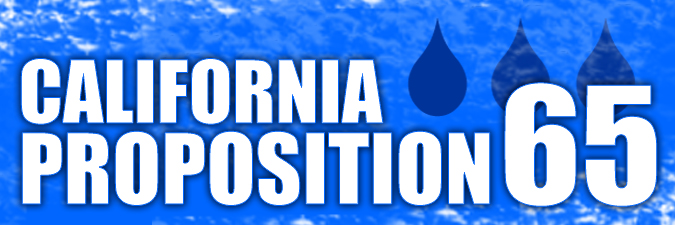California Proposes Conforming Amendments for Temporary Point-of-Sale Prop 65 Warning Requirements for BPA Exposure

California’s Office of Environmental Health Hazard Assessment (OEHHA), which administers Proposition 65 (formally known as the Safe Drinking Water and Toxic Enforcement Act of 1986), has proposed conforming amendments to the Article 6 clear and reasonable warning regulations aimed at reconciling differences in the operative provisions of Sections 25607.30 and 25607.31 with Section 25603.3 of Title 27 of the California Code of Regulations. Specifically, OEHHA intends to repeal Sections 25607.30 and 25607.31, which were adopted under the emergency rulemaking temporarily allowing point-of-sale Prop 65 warnings for BPA exposures, because they are inconsistent with more recent amendments to Section 25603.3 promulgated under the formal rulemaking process that extended the use of point-of-sale warnings through the end of this year, provided companies submit certain information to OEHHA on affected products for inclusion in an online database.
By way of background, Prop 65 prohibits a company from knowingly exposing any individual to a listed chemical without first providing a “clear and reasonable warning” to such individual. Warnings are not required for reproductive toxicants when there is no observable effect at 1,000 times the exposure level, or when the exposure level is below an MADL established by OEHHA as a safe harbor. BPA was listed as a female reproductive toxicant effective May 2015, requiring companies to warn consumers about potential exposure to the chemical beginning May 11, 2016. However, OEHHA had not yet established an oral MADL for BPA by that date, instead opting to wait for the results of research sponsored by the federal government, which is not expected to be completed until late 2017 or early 2018. Due to concerns that this situation would have an adverse effect on the food supply, OEHHA initiated an emergency rulemaking action in April 2016 to amend Section 25603.3 of the regulations, adding subsections (f) and (g), to permit the temporary use of a standard point-of-sale warning message for BPA exposures from canned and bottled foods and beverages. In August 2016, when OEHHA repealed and replaced the clear and reasonable warning provisions of Article 6, the BPA emergency provisions were additionally added as Sections 25607.30 and 25607.31 as a temporary measure until adoption of permanent rulemaking provisions in Section 25603.3(f) and (g).
On December 2, 2016, pursuant to a formal rulemaking process, OEHHA finalized the regulation extending the use of point-of-sale warnings for foods and beverages packaged in cans or bottles that cause exposures to BPA as safe harbor until December 31, 2017, and additionally requiring manufacturers that rely on the signage as a safe harbor to submit information to OEHHA for inclusion in an online database of products, available at www.P65Warnings.ca.gov/BPA. More specifically, manufacturers whose cans, lids, and caps contain intentionally added BPA may only use the signage as a safe harbor if they provide the following information for each product to OEHHA for inclusion on its online database: the product brand name; a product description; the Universal Product Code (UPC) or other specific identifying designation; and, if BPA is no longer used in the manufacture of the product packaging but is still available for sale or in inventory, the last expiration or “use by” date for the product where BPA was intentionally used in the can linings or seals.
While OEHHA has launched the website mentioned above, at this point, no products are listed in the database on the site even though OEHHA had encouraged businesses to provide the requested information prior to the effective date of January 1, 2017. This may be because Sections 25607.30 and 25607.31 were not updated to include the requirement to provide OEHHA with the above-described information for its online database. These sections also do not include the December 30, 2017 sunset provision for BPA point-of-sale warnings, which could lead to confusion. To achieve consistency, OEHHA’s proposed rulemaking will repeal Sections 25607.30 and 25607.31, but retain the existing BPA warning provisions in Section 25603.3, subsections (f) and (g). Thus, no substantive changes are being proposed for the effective dates of the point-of-sale warnings, which apply from January 1, 2017 until December 30, 2017. Notice of the proposed rulemaking and information on how to comment can be found on OEHHA’s website.